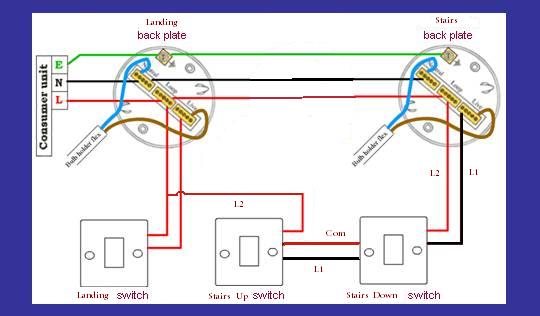Hi guys,
Hopefully you can help. I am renovating a house and have just switched my hall and landing light from a rose downstairs and a three spotlight light upstairs to standard decorative ceiling lights. The switch unit downstairs has two switches, one switches the downstairs light on and off and the other switches the landing light on and off. There is a switch upstairs on the landing for the landing light. For some reason I just can't work out how the cables should be aligned in the downstairs light in order to resume the correct operation of the switches and light. As I pulled the rose down the cables became mixed together. Can anyone please help? In the downstairs light I have 3 Neutral Cables (black), Live Switch Cable (Black with brown tape around) and 4 Live (Red) cables. Naturally I have 4 Earth cables too.
Many thanks in advance.
Chris.
Hopefully you can help. I am renovating a house and have just switched my hall and landing light from a rose downstairs and a three spotlight light upstairs to standard decorative ceiling lights. The switch unit downstairs has two switches, one switches the downstairs light on and off and the other switches the landing light on and off. There is a switch upstairs on the landing for the landing light. For some reason I just can't work out how the cables should be aligned in the downstairs light in order to resume the correct operation of the switches and light. As I pulled the rose down the cables became mixed together. Can anyone please help? In the downstairs light I have 3 Neutral Cables (black), Live Switch Cable (Black with brown tape around) and 4 Live (Red) cables. Naturally I have 4 Earth cables too.
Many thanks in advance.
Chris.



